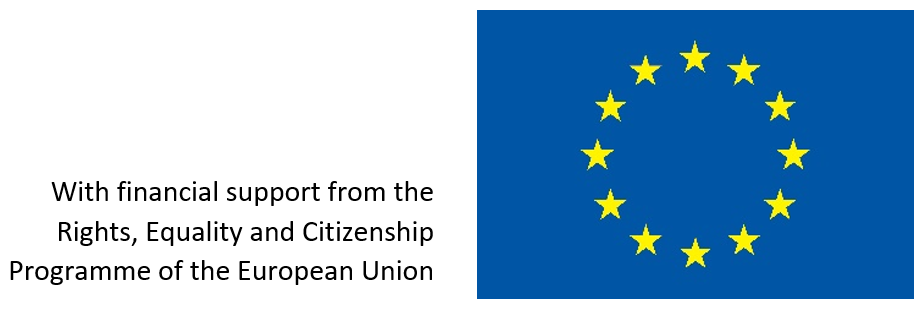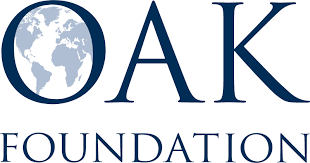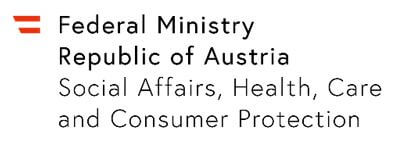Since its foundation in 1994, WAVE has been continuously advancing research and knowledge on gender-based violence against women and girls. At the centre of WAVE’s research activities? The Country Report! The Country Report is WAVE’s main publication, and it is published every two years. It represents an important tool for highlighting the situation of women’s specialist services across Europe. Furthermore, as the only report gathering data on the status of women’s specialist services in 46 European countries, it gives unique insight into the implementation or lack thereof, of Istanbul Convention standards and thus complements the GREVIO shadow reports. The newest WAVE Country Report was published at the end of 2023, highlighting the status and value of women’s specialist services in not only tackling gender-based violence against women, but for the first time also in preventing gender-based violence against women.
In the following interview, Elena Floriani and Léa Dudouet, the WAVE Team members who worked on the report, unravel the intricacies of the insightful WAVE Country Report 2023 and shed light on the challenges and achievements that shape the landscape of women’s specialist services. This interview serves as a unique opportunity to delve into the origins and objectives of the WAVE Country Report, and explore the impactful findings and significance of the latest report.
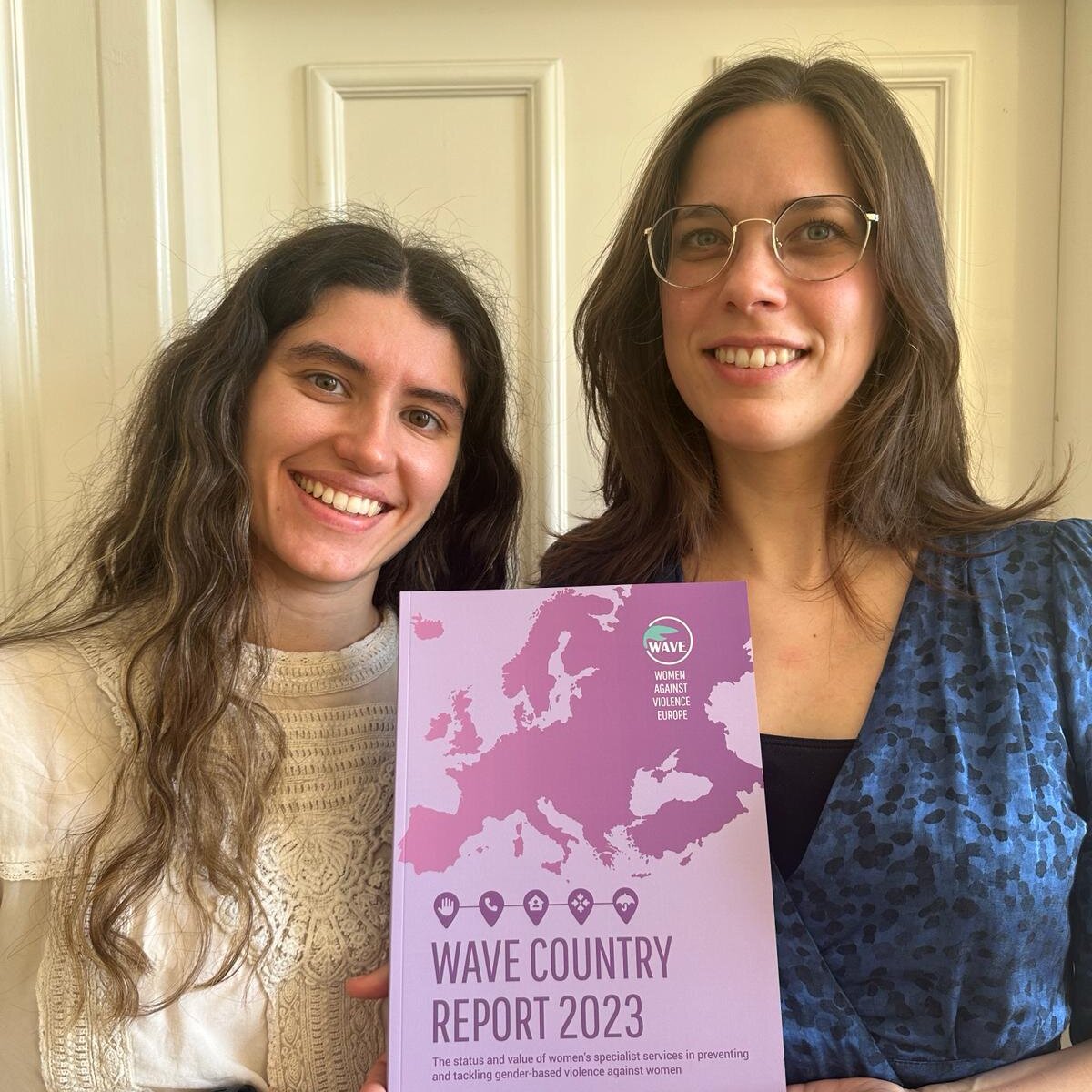
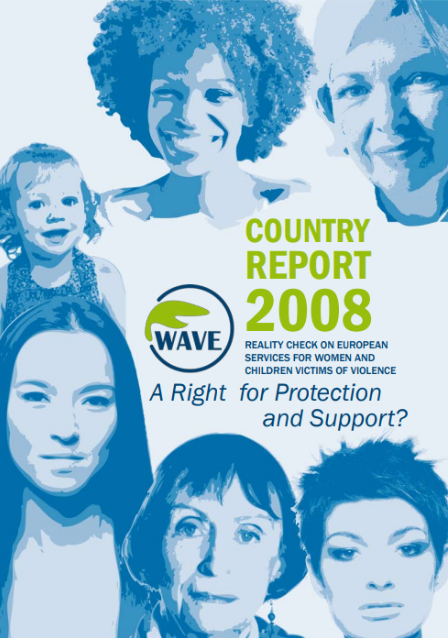
WAVE seeks to highlight the importance of the work of women’s organisation and why their expertise in combating violence against women and girls (VAWG) is invaluable. Country reports were collected by WAVE Members on an annual basis as far back as 1998, to showcase the work of women’s specialist services (WSS) and available support services for survivors of various forms of violence. From 2008 on, this information was systematically published in the form of an annual WAVE Country Report, in close collaboration with WAVE Advisory Board Members who provide their expertise and the most up to date information on WSS and assist in raising awareness of developments regarding VAW in their countries.
In the last decade, there has been recognition of states’ responsibility to protect the human rights of women and their children, and to ensure their safety and protection from violence, mostly notably following the adoption of the Council of Europe’s Convention on Preventing and Combating Violence against Women and Domestic Violence (commonly known as the Istanbul Convention) in 2011. The Convention is the strongest and broadest international treaty to tackle VAW and aims at zero tolerance for such violence. A key focus of the WAVE Country Report has therefore been to assess states’ compliance with the minimum standards of the Istanbul Convention on service provision on national women’s helplines, shelters accessible to women survivors of VAW, and the minimum standards set by the Council of Europe for provision of women’s centres.
The WAVE Country Report has seen some changes over the years. Since 2017, Country Reports have been published every two years, in order to ensure more thorough data collection. The Country Report Editing Group (EG) was furthermore established in 2021 to support the WAVE team in the development of the WAVE Country Report and questionnaire, and to implement knowledge and expertise from WAVE’s diverse membership into the WAVE Country Report. And finally, the Data Collection Tool (DCT) was developed by the WAVE office to collect data on WSS in Europe for the Country Report, through an online questionnaire. It is based on a mapping report published by WAVE in 2016 and was first used for the WAVE Country Report published in 2018. Since then, the online tool was redesigned, to make it more user-friendly.
The WAVE Country Report aims to depict the situation of WSS in Europe from a feminist civil society perspective and as a reminder of why WSS are best placed to provide support for women, their children and girls who are experiencing gender-based violence (GBV). WAVE intensively advocates for the distinction between general support services and women’s specialist services in legislative frameworks, strategies and policies. This distinction is crucial in safeguarding the rights of and the tailored support required by survivors of VAW. WAVE defines women’s specialist services are feminist services offering tailored, survivor-centred support, that recognises the complex and specific needs of women and their children impacted by violence against women and domestic violence. However, recent trends towards ‘gender-neutral’ policies threaten the specialised assistance provided by these essential services. As the only report of its kind providing data on the availability of WSS in Europe, the WAVE Country Report endeavours to present an accurate depiction sourced directly from WSS themselves. Their observations on challenges and obstacles to specialised service provision stem from firsthand experiences on the ground, rendering the report an authentic reflection of the situation across Europe.
The WAVE Country Report (CR) is a unique tool and the only report of this kind available in Europe. While similar reports might be available at the national level, the WAVE CR collects and compares data from 46 European countries on a regular basis, every two years. This allows us to monitor the compliance of the states with international standards of service provision, specifically focusing on those services that are best equipped to prevent and tackle GBV: women’s specialist services. Very often, research related to GBV focuses on the prevalence of violence and how to counteract it, but not necessarily on the valuable work done by feminist organisations. At the same time, data collection conducted by national statistic offices on the availability of services often does not differentiate between women’s specialist services and generic services supporting survivors of all forms of crime, without a gender-specific approach. The CR brings attention to WSS and displays their availability, the work they carry out, the characteristics of the survivors they assist, the accessibility of such services, the funding sources and much more. Therefore, it represents a crucial tool to advocate for improvements in service provision at the national and European level and eventually to combat GBV in Europe.
When it comes to national women’s helplines, we observed an improvement in the number of countries that have a helpline complying with the Istanbul Convention standards, meaning that it is state-wide, round-the-clock and free of charge. This number has gone up from 30 countries in the Country Report 2021 to 32 in the last report, since the helplines in France and Liechtenstein are now available 24/7. At the same time, some negative trends are to be observed: in Belarus, the helpline operated since 2012 by the ‘Gender Perspectives’ international organisation was suspended by a court order in September 2021, leaving the country without a national women’s helpline.
Women’s shelters are services providing safe accommodation and empowering support based on a gender-specific understanding of violence. They respond to immediate crises and should be easily accessible for women and their children, with at least one bed space available per 10,000 head of population. Unfortunately, the CR 2023 still highlights a considerable lack of women’s shelters: of 46 European countries, only ten meet the recommended standard: 20 out of 27 EU Member States (74%) and 16 out of 19 states outside the EU (84%) are still failing to meet the recommended provision of bed spaces.
Women’s centres are women’s services providing non-residential specialist support to women survivors. They work within a gender-specific and culturally sensitive framework, putting the needs of the survivor at the centre of each intervention. Two countries in Europe have no women’s centres: Belarus and Hungary. Overall, the number and the geographical distribution of women’s centres in not sufficient, and the data collected for this report show a shortcoming of 53% of the recommended number of women’s centres.

When it comes to sexualised violence (SV), there are specific services that can provide tailored support to survivors, such as sexual assault crisis centres or rape crisis centres. In some countries, women’s centres are also specialised in tackling this form of violence. Currently, 28 countries out of 46 (61%) have at least one rape crisis centre (RCC), sexual violence referral centre (SVRC) or equivalent centre. Nevertheless, in most countries, there are major shortcomings in specialist services for survivors of sexualised violence.
For the first time, the CR presents data regarding the primary prevention of VAW, focusing on the availability of National Action Plans against violence against women and girls (available in 67% of the countries), on the use of an official definition of primary prevention (present in the legislative framework of 35% of the countries), on the presence of state funding for primary prevention activities (available in 70% of the countries) and the type of activities provided, which range from feminist self-defence training to general public-awareness campaigns.
Overall, the findings of the CR still show a desperate need for women’s specialist services which should be available in adequate numbers and geographical distribution and should have the necessary long-term financial resources. This is key to effectively working towards putting an end to violence against women.
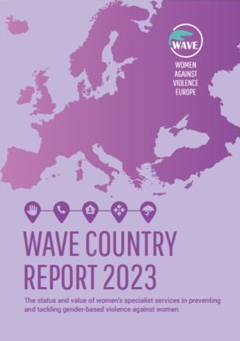
Before delving into some of the notable differences in the WAVE Country Report 2023 compared to previous years, it should be noted that a lack of data in some countries does not always allow for a comparison across years and across data from different editions of the Country Report. In some cases, respondents were unable to obtain all relevant information and data. This was either because of limited capacity or because government agencies either do not collect this data or they do not make the data available to the public. Therefore, they could not present the whole picture of specialist services available in their country.
Taking this into consideration, there were two fewer European countries with at least one national women’s helpline in the WAVE Country Report 2023 (37 in total), compared to the WAVE Country Report 2021 (39 in total), representing a 4% decrease. However, the number of national women’s helplines meeting the Istanbul Convention (IC) standards (free of charge and available 24/7) has increased from 65% to 70% since the last report.
In terms of shelter provision, the situation has also improved since the CR 2021, as there is an increase in both the number of shelters accessible to women and available bed spaces. The overall percentage gap between beds needed and beds provided has slightly decreased from 55% to 54%. One aspect which has hardly changed is the number of European countries meeting the IC’s recommended standard of one bed space per 10,000 heads of population, as only one more country (10 of 46) now meets the IC standards, compared to two years ago.
The number of European countries with at least one women’s centre has not changed since the CR 2021 (44 of 46). What has improved is the total estimated number of women’s centres throughout Europe; from 3,210 to 4,085 women’s centres. However, it cannot be assumed that actual levels of provision have increased significantly, and there are still stark disparities in the availability of women’s centres between EU and non-EU countries. Differences in data collection methodology and availability are at least to some extent responsible for the higher figure.
Some form of specialist SV service (RCC, SVRC, or equivalent) is available in 28 countries, compared with 27 in the 2021 report, representing a 2% increase. Overall, there has been an increase in the estimated number of SV services, from 462 to 612 reported centres. The introduction of more SV services is to be welcomed, but overall, the gulf between the recommended minimum IC standard (one centre for every 200,000 inhabitants) and actual number of centres is enormous.
And finally, as emerged in previous reports, there are serious gaps in the availability and comparability of data concerning the recorded number of femicide, as there is no Europe-wide data collection system or agreed use of the term femicide. These figures should be treated with caution. Data available in the surveyed countries are not statistically robust and should be regarded as estimates based on the best available sources. Considering this, there were at least 2,558 estimated victims of femicide in 2022, although in many countries systematic data is not collected and this figure is not representative.
The CR 2023 includes for the first time a focus on primary prevention (PP) activities. This came out of WAVE’s increasing attention to the importance of prevention when talking about VAWG, both on a strategic and also research level. The provision of WSS, as detailed in this Country Report, is vital. However, properly resourced and informed action must be undertaken to prevent such violence before it is committed. In order to eradicate VAWG, it is vital that relevant stakeholders and states understand its root causes and dedicate sufficient funding to primary prevention. PP is harder to evaluate than secondary prevention (early identification and intervention) and tertiary prevention (crisis response, support and recovery), but it is vital and cost-effective. It requires a long-term paradigm shift in behaviours, attitudes and systemic power structures.
In 2022, a new WAVE Thematic Working Group (WG) on PP was established, after a consultation with WAVE Members and internal discussions between the Advisory Board, Board and WAVE Office on which topics were most important for the network. This WG marks the beginning of WAVE’s work on primary prevention within the context of VAWG and considerations on how we can advocate for the inclusion of primary prevention activities without overshadowing the importance of WSS. The WG consists of around 15 WAVE members who either are themselves directly working in PP or those interested in integrating PP in their organisations’ work. To ensure adequate data collection on the topic, the support of the WG was essential for the CR 2023. In February and March 2023, the WG contributed to the development of the CR questionnaire, and in October 2023 it was involved in the editing of the related chapter. The information gathered in the CR 2023 will establish a base from which to assess and monitor actions taken by countries to meet their obligations.
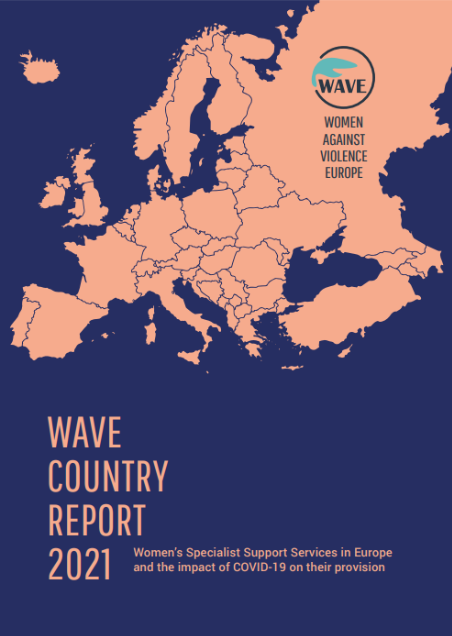
Being an advocacy tool, the WAVE Country Report has a double-faceted nature: on one side, it needs to have a strong methodology that ensures comparability over time; on the other side, it needs to adapt to the most relevant and pressing issues affecting the work of WSS. For instance, the Country Report 2021 included an extra chapter on the impact of COVID-19 on violence against women and the work of WSS during the pandemic, as it was not possible to analyse the European context in 2020-2021 without taking this aspect into account.
As already mentioned, the latest report highlights the importance of primary prevention and the necessity to strengthen women’s specialist services amidst the increase in gender-neutral policies and general services. Additionally, when assessing the availability of WSS, the Country Report 2023 also introduces a more thorough focus on their accessibility, as adequate numbers of services do not necessarily mean that all survivors can find support. Thus, whenever available, the data presented include information on the accessibility of services for women survivors of specific forms of violence (e.g., female genital mutilation, trafficking) and for survivors from vulnerable groups (e.g. undocumented women, homeless women, women with physical and/or cognitive disabilities, transgender women), and on the availability of services that are specialised in supporting these survivors.
In the long run, the Country Report aims to contribute to the availability of data at the European level, as there is currently only limited data available on women’s specialist services for most countries included in WAVE’s Database. This incremental process will be beneficial to providers of women’s specialist services and policymakers alike, as it will strengthen the work and impact of such services, helping them to become more visible at a European level. Moreover, developing a common understanding of definitions in this sector is a long-term goal of the WAVE Network.
According to consultations with WAVE members, the WAVE CR is widely used by women’s rights activists and women’s organisations, mostly for lobbying, advocacy, research and education purposes. For instance, WAVE members in Slovakia use the report to lobby at the national level for adequate funding for WSS, to develop the capacity of existing services and open new ones to meet the country’s needs. WAVE members in Italy use the report in advocacy efforts, to show good practices examples from other countries and advocate for the improvement of service provision. WAVE members and researchers from various countries report that they regularly use the CR in research, as it provides a good overview of measures taken across Europe and useful statistics.

These examples show the variety of uses that the Country Report can serve. Still, the main purpose for which it is created every two years is to offer a useful and reliable lobbying and advocacy tool. Being published by the biggest European network of WSS, it is based on decades of experience in the field of combatting violence against women and year after year it accompanies the efforts of women’s rights advocates, according to the most pressing issues and needs in the sector.
In recent years, WAVE also started collaborating with EIGE: the data collected by the Country Reports in terms of national women’s helplines and women’s shelters are included in EIGE’s Gender Statistics Database. This allows a wider reach and dissemination of available statistics and facilitates the comparison of data within different years and countries. Stakeholders, supporters, and allies can therefore also use this user-friendly platform to access WAVE’s data.
